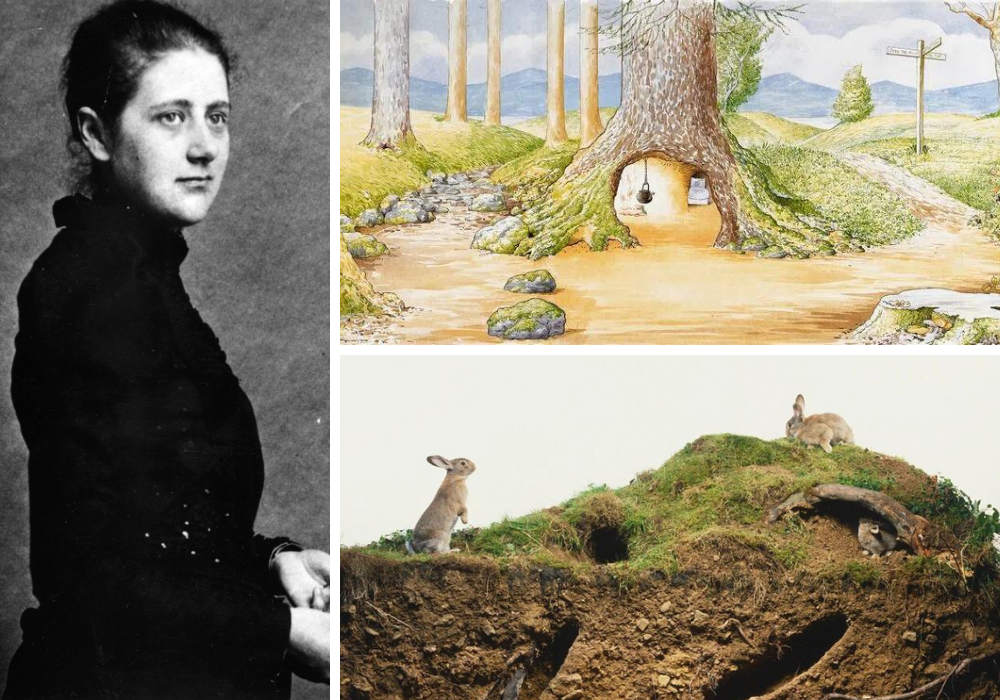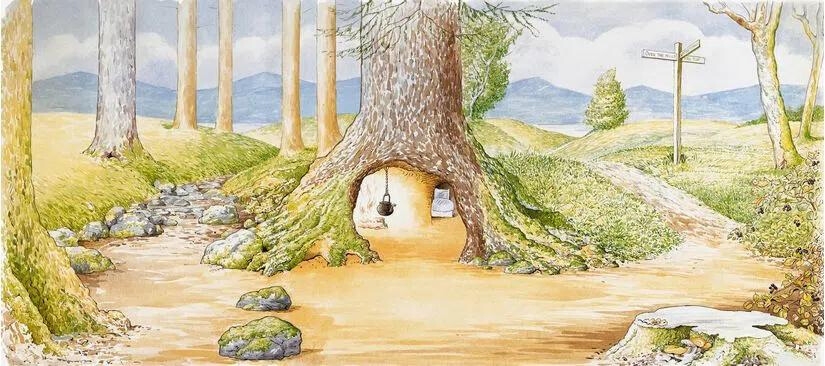With Into the Burrow now on the Hertz Stage and the Beatrix Potter exhibit on display in the High Museum of Art, the spotlight is on the mind behind the never ending creativity that gave us the tales of Peter Rabbit.

Beatrix Potter’s beloved children’s tales have inspired readers for well over a century. The animals and places breathed to life in stories such as The Tale of Peter Rabbit™, The Tale of Benjamin Bunny, The Tale of Mr. Jeremy Fisher, The Tale of Squirrel Nutkin, and The Tale of Mrs. Tiggy-Winkle have stood the test of time. They continue to delight households over bedtime reading and to educate young people in classroom story time.
Potter’s writing is elegant, without being dusty; it’s smart, while still being accessible; her stories are simple and sweet, without being treacly. A craft like this paints characters with extraordinary staying power — a wealth of friends with whom we can grow and learn. Her skill as a writer is only matched by her skill as an illustrator, a talent she first started to hone at the age of eight, while spending summer holidays in Perthshire, Scotland.
A less well-known fact about Beatrix Potter is that she was an ardent conservationist, with a fierce love of nature and animals. Spending summers in Scotland, and later in the mountainous regions of the Lake District, Potter was given an escape to open air natural habitats, away from the somewhat oppressive expectations of a young woman in England’s Victorian Era. She had a variety of pets (which she drew constantly), from mice to hedgehogs, and even a collection of butterflies. She was fascinated by almost all natural sciences and even developed theories (including one on reproduction) that because of her sex and amateur status were rebuked.
An entrepreneur at heart, Potter sketched and painted her own greeting cards to send to friends, while away on holiday. Upon hearing that her former governess’ son was ill, she illustrated a letter in the form of a short story about a rabbit named Peter (inspired by her own pet) and his three siblings, thus launching her career as an illustrator and writer. Gaining independence from the sales of the books that followed, Potter began to buy parcels of land that protected the open fields where sheep grazed as well as woodlands and land that channeled rainfall. She became involved in community planning, resisting developers and restoring and preserving farms. A creative thinker, an entrepreneur, a conservationist. All of these titles that can be attributed to the legacy behind the name Beatrix Potter are ever present in her carefully drawn characters that inspire Into the Burrow: A Peter Rabbit™ Tale.
In today’s production, behind the rally cry of Peter’s “Let’s take back the garden!” you can hear young Potter’s frustration at not being taken seriously by other scientists when she took her findings about lichens to the Royal Botanic Gardens at Kew. When Mrs. Tiggy-Winkle thinks creatively and uses her tap dancing to set off the traps in Mr. McGregor’s garden, you can see Potter as a young woman lifting up friends and family with beautifully illustrated greeting cards. When Mr. Jeremy Fisher screams “Let’s do it for the butterflies!” you can sense Beatrix Potter, the conservationist. Behind all of the characters in her writings, you will have a peak at the real writer and illustrator Beatrix Potter, a woman ahead of her time.
Learn more about Into the Burrow: A Peter Rabbit™ Tale.




